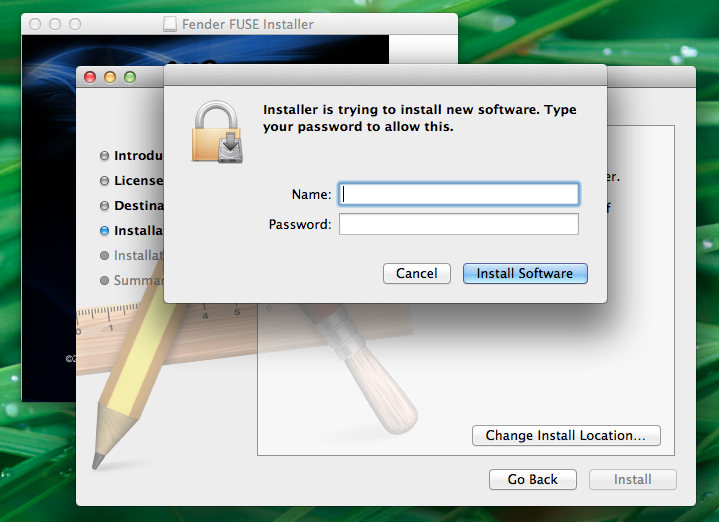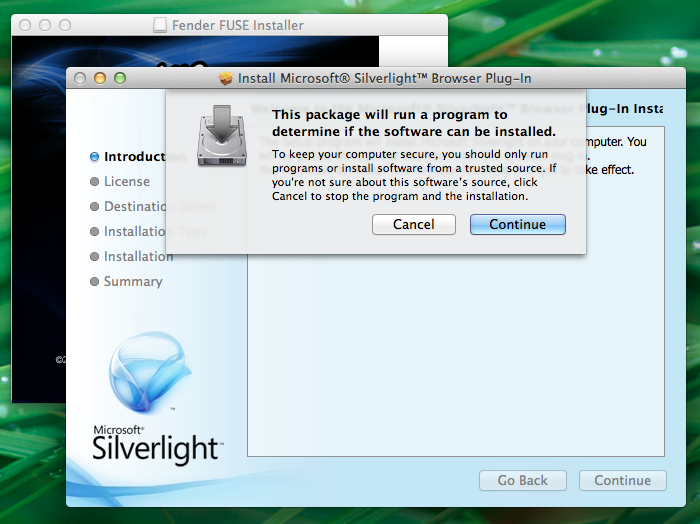Fuse For Mac
Oct 07, 2019 Read the latest review of the Top Mac FTP Clients 2018-2019. Evaluate and choose the best FTP client for your own needs. We gathered a short overview of the top FTP client solutions for macOS and hope it will help you to find the best FTP manager for you. May 06, 2019 In a field dominated by Windows FTP clients, this is easily the best FTP client for macOS. And as proprietary freeware, you get the updates and guidance of a paid service without spending a dime. Runner-Up, Best Free FTP Client for macOS. Cyberduck is another big name among the best free FTP clients, especially among FTP clients for.  Apr 29, 2018 Now, without further ado, let's look at five of the best FTP clients available right now. Cyberduck, FTP Client for Windows and Mac. Cyberduck is one of the most beloved FTP clients around, especially by Mac fans. It's also free. If you ask a web developer what the best free Mac FTP client is, they’ll often say Cyberduck without hesitation. Welcome to the homepage of FileZilla®, the free FTP solution. The FileZilla Client not only supports FTP, but also FTP over TLS (FTPS) and SFTP. It is open source software distributed free of charge under the terms of the GNU General Public License. FTP clients allow you to connect your Mac to your remote server via the Internet. While FTP clients are pretty basic applications, they’re not all created equally. Some feature different price-tags, feature lists and other important differences. There’s a number of well known paid FTP apps for the Mac, but what if you just want to upload a.
Apr 29, 2018 Now, without further ado, let's look at five of the best FTP clients available right now. Cyberduck, FTP Client for Windows and Mac. Cyberduck is one of the most beloved FTP clients around, especially by Mac fans. It's also free. If you ask a web developer what the best free Mac FTP client is, they’ll often say Cyberduck without hesitation. Welcome to the homepage of FileZilla®, the free FTP solution. The FileZilla Client not only supports FTP, but also FTP over TLS (FTPS) and SFTP. It is open source software distributed free of charge under the terms of the GNU General Public License. FTP clients allow you to connect your Mac to your remote server via the Internet. While FTP clients are pretty basic applications, they’re not all created equally. Some feature different price-tags, feature lists and other important differences. There’s a number of well known paid FTP apps for the Mac, but what if you just want to upload a.
FUSE for macOS (was OSXFUSE) allows you to extend macOS's native file handling capabilities via third-party file systems. It is a successor to MacFUSE, which has been used as a software building block by dozens of products, but is no longer being maintained. Author: Nathan Willis Filesystem in Userspace (FUSE) has long been one of my favorite features on Linux systems. Using FUSE modules, you can mount all sorts of innovative resources — Gmail, your Flickr photos, a remote SSH server — directly into your local machine’s filesystem and use their contents exactly as if they were normal. Fuse Reel creates innovative Tools For Tech that organize and simplify your lives. Our staple product, The Side Winder, raised over $300,000 on Kickstarter as the most funded MacBook Accessory of 2017, and the World's first MacBook Charger Winder. Since 2017, we have launched an entire line of cable management products.
| Click here to return to the 'How to uninstall MacFUSE' hint |
I'm thrilled to see that FUSE has been ported, ssh file systems are a blessing.
I chose not to use the package installer since the site says it's purely a one off, I assume to get folks trying out FUSE. Instead I followed the instructions to compile everything from source which were linked from the original post:
http://code.google.com/p/macfuse/wiki/HOWTOSo far I've had no trouble with the mounted shares, and I'm working on benchmarking VS mounted smb shares.. my main interest is finding something that performs better than mounted Windows file shares.

If you want the share to show up in the Finder you'll need to pass in some arguments to the sshfs command, e.g.:
The path for the mountpoint can be any empty directory on your system. I created a folder at ~/mount where I have created empty directories for common shares. Using the options above the share can be unmounted via the finder.
I switched from Samba to netatalk which is the normal afp protocol native on OS X. This works seamlessly and I have already set up similar things in production environments in several other places (mostly without the OpenVPN option, because it was in a LAN).
This is a freeware package that allows you to just this.
http://www.macupdate.com/info.php/id/21349
The Fink Project has FUSE and sshfs available. Installing via Fink has the advantage of easy un-installation later on -- just run fink remove sshfs and fink remove fuse.
Fuse For Mac High Sierra
As for using sshfs, the only problem I've seen is a kernel panic if I try to restart or shutdown with a volume still mounted in the Finder. If I manually unmount the sshfs volume first, there's no problem.
Regarding the uninstall script link to googlecode site. The script may need to be revised.. I am posting a rev here and on the google site. The revised script is at the bottom of this post.
Read below for more info:
I had a few weird problems with macfuse.. dvd/cd not mounting and just general
weirdness on my 10.4 pbook. I ran the script above, but I found something that may
need to be fixed in it
In the part where you change directories to /System/Library/Extensions and then
delete the fuse.kext file:
cd /System/Library/Extensions
sudo rm -r fusefs.kext
I found that fusefs.kext file was in the directory:
/Library/Extensions/fusefs.kext
Not the one in the script:
/System/Library/Extensions/
I am not sure if the installer put mine in the wrong dir or this something that needs to be fixed in the script, but I thought everyone should know.
<<< snip below this line -- do not include this line. The '#!/bin/bash' part must be first line >>>>
#!/bin/bash
# Copy this script
cd /usr/local/bin
rm sshfs
sudo rm glib*
sudo rm pkg-config
sudo rm *gettext*
sudo rm *mount*
cd /usr/local/include
sudo rm -r fuse*
sudo rm -r glib-2.0
sudo rm gettext-po.h
cd /usr/local/lib
sudo rm -r pkgconfig
sudo rm -r glib*
sudo rm -r libg*
sudo rm -r *fuse*
sudo rm -r *gettext*
cd /usr/local/share
sudo rm -r glib*
sudo rm -r gettext
# Note: revised the target dir.
# previously was this dir which was incorrect:
# cd /System/Library/Extensions
# correct dir seems to be this one:
cd /Library/Extensions
sudo rm -r fusefs.kext
cd /System/Library/Filesystems
sudo rm -r fusefs.fs
sudo touch /System/Library/Extensions
# Note: Removed this line:
# shutdown -r now
# replaced it with a prompt at end of script telling user to restart:
echo ' '
echo 'PLEASE RESTART YOUR COMPUTER NOW..'
Actually, I have found a few other files that were not deleted when I first ran this script. Specifically the .dylib files in the /usr/local/lib/ dir.
Instead of running the script again, I would recommend running the shell script posted below with this command:
find_macfuse_stuff.sh grep -iv 'cannot open'
(of course you would have to name the script below 'find_macfuse_stuff.sh' after you copy and paste it into a text file)
This script will just return the files that are still installed on your computer and then you can go and delete them by hand one-by-one.. I know it is a pain, but some funky things were happening with my drives after I installed macfuse, so I wanted to be very sure they were gone.
script is below here:
#!/bin/bash
file /Library/Extensions/fusefs.kext
file /Library/Extensions/fusefs.kext/Contents
file /Library/Extensions/fusefs.kext/Contents/Info.plist
file /Library/Extensions/fusefs.kext/Contents/MacOS
file /Library/Extensions/fusefs.kext/Contents/MacOS/fusefs
file /Library/Extensions/fusefs.kext/Contents/Resources
file /Library/Extensions/fusefs.kext/Contents/Resources/English.lproj
file /Library/Extensions/fusefs.kext/Contents/Resources/English.lproj/InfoPlist.strings
file /Library/Extensions/fusefs.kext/Contents/Resources/load_fusefs
file /System/Library/Filesystems/fusefs.fs
file /System/Library/Filesystems/fusefs.fs/Contents
file /System/Library/Filesystems/fusefs.fs/Contents/Info.plist
file /System/Library/Filesystems/fusefs.fs/Contents/Resources
file /System/Library/Filesystems/fusefs.fs/Contents/Resources/English.lproj
file /System/Library/Filesystems/fusefs.fs/Contents/Resources/English.lproj/InfoPlist.strings
file /System/Library/Filesystems/fusefs.fs/Contents/version.plist
file /System/Library/Filesystems/fusefs.fs/mount_fusefs
file /System/Library/Filesystems/fusefs.fs/uninstall-macfuse-core.sh
file /usr/local/include
file /usr/local/include/fuse
file /usr/local/include/fuse/fuse.h
file /usr/local/include/fuse/fuse_common.h
file /usr/local/include/fuse/fuse_common_compat.h
file /usr/local/include/fuse/fuse_compat.h
file /usr/local/include/fuse/fuse_lowlevel.h
file /usr/local/include/fuse/fuse_lowlevel_compat.h
file /usr/local/include/fuse/fuse_opt.h
file /usr/local/include/fuse.h
file /usr/local/include/ulockmgr.h
file /usr/local/lib/libfuse.0.dylib
file /usr/local/lib/libfuse.a
file /usr/local/lib/libfuse.dylib
file /usr/local/lib/libfuse.la
file /usr/local/lib/libulockmgr.1.dylib
file /usr/local/lib/libulockmgr.a
file /usr/local/lib/libulockmgr.dylib
file /usr/local/lib/libulockmgr.la
file /usr/local/lib/pkgconfig
file /usr/local/lib/pkgconfig/fuse.pc
file /usr/local/lib/.BC.IyWMJU
file /usr/local/lib/.BC.c0DOrC
/usr/local/include and /usr/local/lib/pkgconfigSorry if i am making a mistake but i stumbled across your page when trying to uninstall MacFuse (V2) myself and found the answer in the system preference (then --> MacFuse --> uninstall), seems the new version (2009) has its own installer. Furthermore, i realize that this forum is for Linux, but it might help a Mac user as i invariably fell onto that page after googling 'uninstall MacFuse' so if an other Mac user reads this it could help them - (might also be the same principle in the Linux system somewhere in your sys preferences' - (Don't know use Linux, can't be more specific)).
Er, this site is called Mac OS X Hints. I'm not sure how you got the idea that it was a Linux forum.
Anyway, thanks for the tip regarding an uninstall function in the MacFuse preference pane.

Asio for mac. MacOS comes along with a piece of software called FUSE and many do not seem to be aware of its purpose. So what is FUSE? This software enables extending native file handling capabilities of macOS with the help of file systems developed by third parties. You might have heard of MacFUSE, it is a previous version of FUSE system and is no longer maintained. Legacy MacFUSE file systems are supported through the optional compatibility layer.
Fuse For Mac Os X
Users install FUSE for macOS to utilize a third-party file system written atop FUSE for macOS. Developers download FUSE to use its SDK for writing new files systems in an easier and quicker way as compared to traditional approach of writing in-kernel file systems. Content of these file systems can come from any sources, e.g. the local hard drive, the network or memory. Unlike kernel extensions, FUSE file systems are regular applications that are no different from other macOS apps, when it comes to programming tools, debuggers and libraries you are referring to.
FUSE software offers a mechanism for implementing a full-scale file system in a user-space program. APIs provided by OSX FUSE include a superset of the FUSE API. Since it initially has come on Linux, many existing FUSE filesystem can be reused on macOS.
FUSE SDK are C-based and Objective-C-based, in case you need a file system created in Python, Java or any other language you will have to install the relevant language bindings first.
The FUSE consists of a kernel extension and various user space libraries and tools, and the repository contains source code for file systems such as sshfs, procfs, AccessibilityFS, GrabFS, LoopbackFS, SpotlightFS and YouTubeFS.
Online storage mounting solution
CloudMounter, a popular application by Eltima used for mounting cloud storage services on Mac, also relies on FUSE. The software allows mounting cloud storages on Mac, so you can browse their contents as if it were stored on a local hard drive, and it also enables working with remote servers via FTP/SFTP/FTPS and WebDAV protocols. Cloud services supported include Google Drive, Amazon S3, Microsoft OneDrive and Dropbox.
CloudMounter
Version 3.5.585 (23rd Sep, 2019) Release notes
Category: Utilities